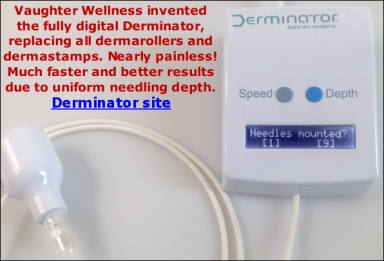>>personally I find vitamin c quite harshThe acidic forms of vitamins are usually the most effective but also the most irritating. The acidic form of vit. A is Retinoic acid, Tretinoin. Other forms of vit. A are slowly converted to Tretinoin in the skin but the conversion rate is not as high as when Tretinoin is applied directly. Tretinoin however is quite irritating. The same comes for vit. C, ascorbic acid.
Ascorbic acid solutions are very effective but they have to be used up within about one month from making the formulation so unless you prepare it yourself at home, it is unrealistic to sell them because by the time it gets from the factory to the consumer, it is already oxidized and rendered useless.
Yes, you can wash it off after 30 minutes.
We do not sell the derivatives of ascorbic acid because they failed to increase vit. C levels in the skin. Only ascorbic acid increased vit. C levels.
Topical L-ascorbic acid: percutaneous absorption studiesPinnell SR, Yang H, Omar M, Monteiro-Riviere N, DeBuys HV, Walker LC, Wang Y, Levine M.
Duke University Medical Center, Department of Medicine, Durham, North Carolina 27707, USA.
RESULTS:
L-ascorbic acid must be formulated at pH levels less than 3.5 to enter the skin. Maximal concentration for optimal percutaneous absorption was 20%. Tissue levels were saturated after three daily applications; the half-life of tissue disappearance was about 4 days. Derivatives of ascorbic acid including magnesium ascorbyl phosphate, ascorbyl-6-palmitate, and dehydroascorbic acid did not increase skin levels of L-ascorbic acid. https://http://www.ncbi.nlm.nih.gov/pubmed/11207686
To make the subject even more complex, there is another problem with the derivatives of Ascorbic acid, namely peroxidation:
Vitamin C Derivative Ascorbyl Palmitate Promotes Ultraviolet-B-Induced Lipid Peroxidation and Cytotoxicity in Keratinocyteshttps://http://www.healthmegamall.com/Articles/BabeskinArticle244.pdf>>It may only be 60% of the population who get the age reversing benefits of vitamin CNot everything always works in 100% of cases and for 100% of individuals but I doubt they can seriously back up the "maybe 60%" claim.
The results of the study below for example say there was
significant improvement in wrinkling in 57.9% cases but it doesn’t mean that the rest did not get any improvement or benefits from vit. C. Vit. C helps preventing sun damage and that is very important.
Use of topical ascorbic acid and its effects on photodamaged skin topography.Traikovich SS.
Beeson Aesthetic Surgery Institute, Carmel, Ind., USA. AJLively@POL.NET
RESULTS:
…
Clinical assessment demonstrated significant improvement with active treatment greater than control for fine wrinkling, tactile roughness, coarse rhytids, skin laxity/tone, sallowness/yellowing, and overall features. Patient questionnaire results demonstrated statistically significant improvement overall, active treatment 84.2% greater than control. Photographic assessment demonstrated significant improvement, active treatment 57.9% greater than control.





